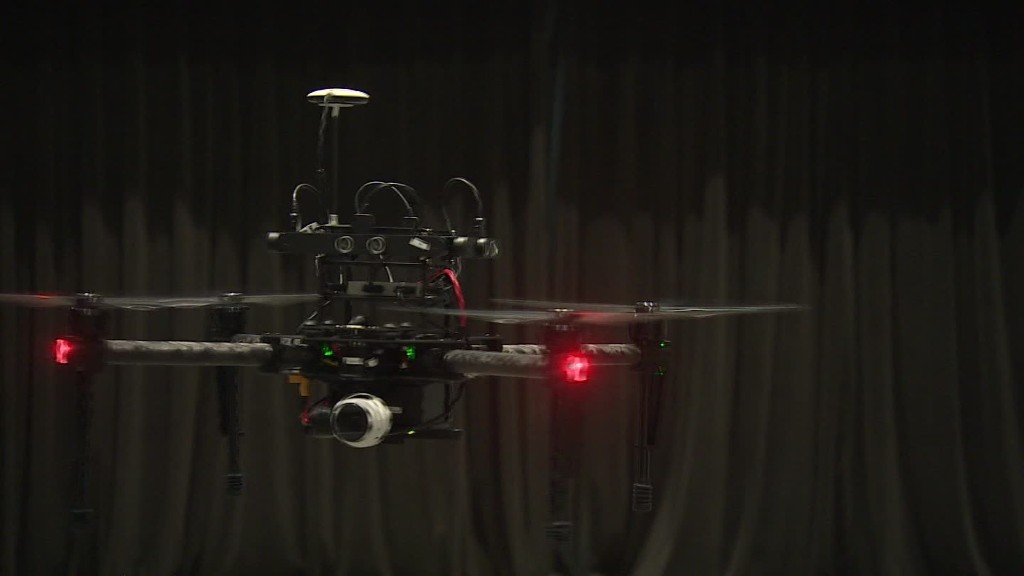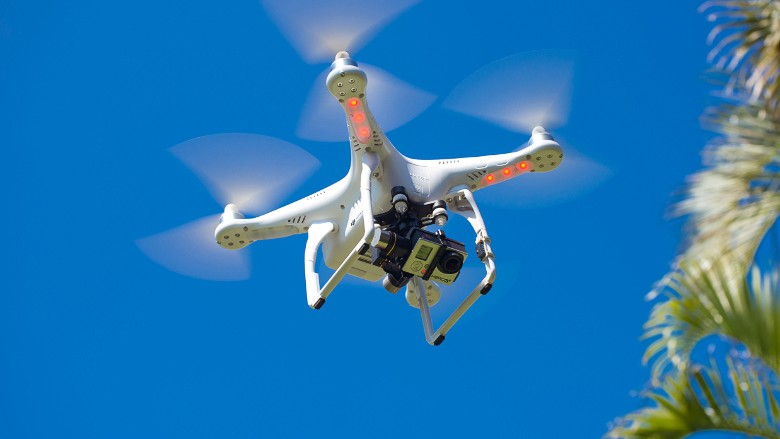
Drones could soon be flying over our heads as they zip around delivering Amazon packages or capturing footage of a fire for local news.
That is, if a new proposed rule is approved by the Federal Aviation Administration.
Drones would have to fly 20 feet above people's heads, and have a 10-foot buffer space on all sides, mostly for safety during take off and landing. Currently, operators are largely banned from flying drones over people not associated with the aircraft. Loosening the regulations could clear the way for commercial uses of drones like for delivery and aerial photography.
Related: Human-carrying drone debuts at CES
The rules are meant to minimize any potential injury to people on the ground should a drone malfunction or an operator lose control. They would apply to drones that weigh more than half a pound and less than 55 pounds, though more powerful drones would be subject to additional rules.
The proposed rules were recommended by an independent FAA panel of industry experts. The panel included members from the drone industry, GoogleX, 3D Robotics, Intel, DJI, airlines and realtors.
The proposed rules will be reviewed by the FAA and opened up for public comment. The FAA will then propose official rules, though it did not share its timeline. The recommendations about commercial drones is unrelated to another set of rules governing small drones, which the FAA is working on for later this summer.

Related: 181,000 drones registered with FAA in two weeks
Under the new rules, manufacturers would need to certify that each drone has a less than 1% chance risk of injury through crash and safety tests. The majority of the testing would be the responsibility of the manufacturers, not the FAA.
A drone falling straight down from any height can cause serious injuries, but the 20-foot space is intended to give an operator time to correct course.
"Falling is not necessarily the worst case," said Nancy Egan, general council at 3D Robotics, who co-chaired the panel. "Full-speed under power is the worse case."

